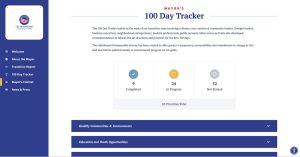A new study published in the JAMA Network medical journal this week is painting a picture about the dangers of excessive drinking for adults in the United States, warning that deaths directly related to alcohol have increased in recent years.
Researchers examined over 690,000 deaths between 2015-2019 of individuals aged 20-64 across the United States, though the legal drinking age is 21 years old. Of the entire cohort, experts found around 12% of deaths were attributed to excessive drinking; when broken down to adults aged 20-49, excessive drinking was responsible for over 20% of deaths.
The Centers for Disease Control and Prevention says “excessive drinking” includes binge drinking and heavy drinking, as well as any alcohol use by a pregnant person or an individual under the age of 21.
Binge drinking is qualified as 4 or more drinks in a sitting for women, or 5 or more drinks in one sitting for men, and is the most common form of excessive drinking. Heavy drinking for women is consuming 8 or more drinks per week, and for men, 15 or more drinks per week.
Excessive alcohol consumption can lead to a number of illnesses and physical ailments, though researchers in Tuesday’s study claimed there was previously little data linking “deaths due to partially alcohol-attributable conditions.” The CDC defines alcohol-related deaths to mean deaths directly attributed to excessive drinking such as alcohol poisoning and liver disease.
This study examined all “premature deaths” that could have been caused by alcohol and found the reasons differed slightly by age cohort. The top three reasons for alcohol-attributable death in adults aged 20-35 were “other poisonings,” motor vehicle traffic crashes, and homicide, while adults aged 35-49 years were more likely to die from alcoholic liver disease rather than homicide.
The numbers also differed widely by gender, as well as across state lines. Of the alcohol-affiliated deaths identified across all age cohorts, 15% were among men 9% were among women.
The state with the lowest proportion of alcohol-attributable deaths among adults aged 20-64 was Mississippi at 9%, compared to the higher end of the spectrum at 21% of total deaths in New Mexico. The percentage of alcohol-attributable deaths was “generally lower in states in the Southeast and higher in the West, upper Midwest, and New England,” researchers noted.
According to the CDC, over 14,000 U.S. adults die from excessive alcohol use each year.
There are a number of limitations to the data, least of which being that deaths of individuals who previously used alcohol but stopped later in life were not included. Researchers also note that individuals tend to under-report their alcohol consumption, meaning actual numbers might be higher.
The first year of the COVID-19 pandemic also saw more Americans drinking heavily or using illicit drugs, which could further skew the numbers.
“This is really affecting adults in the prime of their life,” Dr. Marissa Esser, lead study author and CDC alcohol program director, told the New York Times. “Evidence-based strategies are out there and underused.”
Some of those strategies proposed by researchers include increasing alcohol taxes, alcohol screening and brief interventions.
At least one of those solutions was proposed earlier this year, when the National Transportation Safety Board recommended that all new vehicles in the U.S. be equipped with blood alcohol monitoring systems that can stop an intoxicated person from driving.
The recommendation, if enacted by the National Highway Traffic Safety Administration, could reduce the number of alcohol-related crashes, one of the biggest causes of highway deaths in the U.S.
The NTSB, which has no regulatory authority and can only ask other agencies to act, said the recommendation is designed to put pressure on NHTSA to move. It could be effective as early as three years from now.
The Associated Press contributed to this report.




